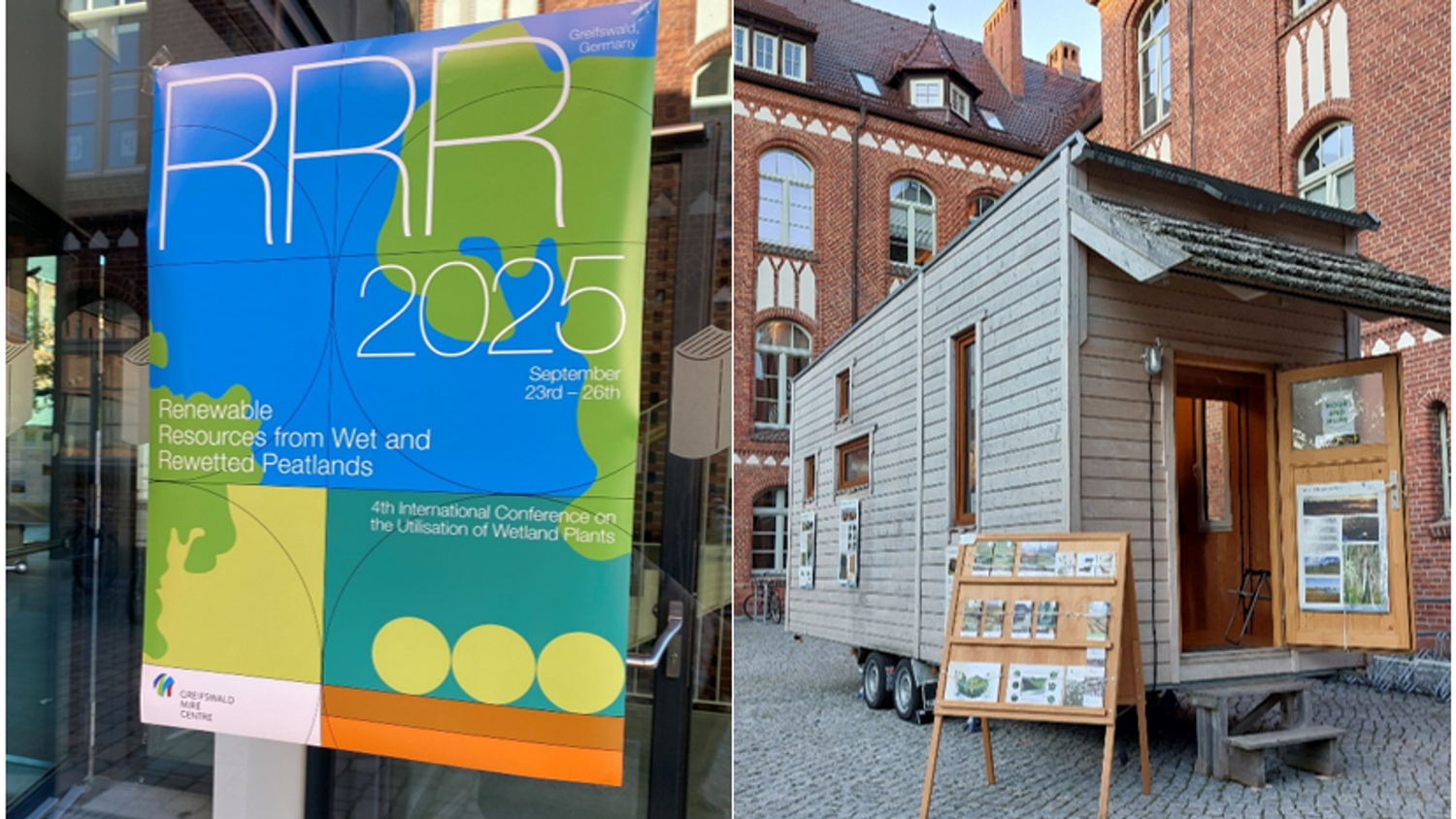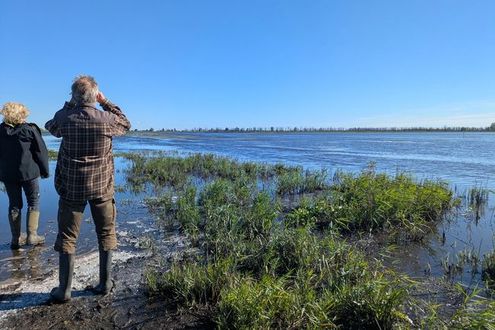As part of the ongoing work in WaterLANDS on aligning governance for wetlands restoration, the Michael Succow Foundation, a partner in the Greifswald Mire Centre, organised a workshop during RRR2025 – Renewable Resources from Wet and Rewetted Peatlands, the 4th International Conference on the Utilisation of Wetland Plants, held in Greifswald, Germany, this September.
Peatlands at the crossroads of nature restoration and carbon policy
The EU Nature Restoration Regulation (NRR) requires Member States to include restoration measures for degraded peatland habitats and drained peatlands under agricultural use in their National Restoration Plans (NRPs) (Articles 4.1 and 11.4). Regarded by many as a potential game changer, the NRR could enable large-scale restoration, supporting biodiversity recovery and sustainable and resilient economies. Its success, however, will depend on effective implementation and sufficient funding.
At the same time, the EU Carbon Removals and Carbon Farming (CRCF) Certification Regulation presents an opportunity to finance restoration through the union-wide certification of emission reductions achieved through peatland rewetting.
Paludiculture – the agricultural or forestry use of wet and rewetted peatlands that preserves the peat soil, thereby minimizing CO₂ emissions and subsidence – is recognised as a restoration measure under the NRR. As highlighted during the RRR conference, attended by nearly 400 participants from many EU countries and beyond, paludiculture is increasingly recognised as a powerful Nature-based Solution offering multiple co-benefits: improved water quality and regulation, local cooling, enhanced mire biodiversity, and economic opportunities that align with healthy ecosystems. Despite challenges such as the lack of supportive legislation, underdeveloped value chains, and low awareness, progress is being made, including the launch of the first Paludi Products Catalogue during the conference.
Workshop aims and focus
The session organised by WaterLANDS in collaboration with EU Horizon project ALFAWetlands, held on 24 September 2025, explored how Member States are integrating peatland restoration and paludiculture into their NRPs ahead of the submission deadline of 1 September 2026, and how CRCF could help bridge economic viability gaps.
Jan Peters, Managing Director of the Michael Succow Foundation, opened the workshop with an introduction to the NRR and its implications for peatland restoration across Europe. He highlighted the importance of linking the regulation’s ambitious targets to practical restoration efforts on the ground.
Through expert inputs and group discussions, participants exchanged experiences on integrating peatlands and paludiculture into NRPs, financing restoration through voluntary carbon certification schemes, and tackling governance and implementation challenges.
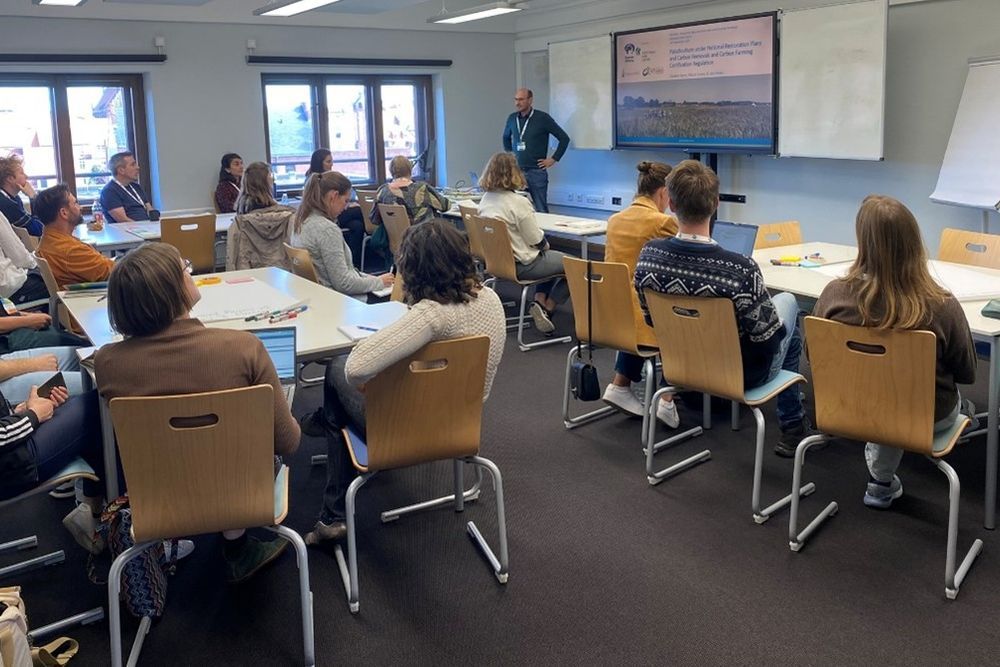
Workshop participants during the introduction to the NRR and its implications for peatland restoration across Europe. Credits: Nathale Melo Martins, Michael Succow Foundation.
EU-level and country experiences
Lucia Causey-Hugecova from the European Commission (DG Clima) presented the CRCF, the first EU-wide voluntary framework for certifying carbon removals, including peatland rewetting as one of the first methodologies under development. The CRCF will establish a unified, credible system to certify carbon farming (Nature-based Solutions), permanent carbon removals, and carbon storage in products as part of the EU efforts to reach net zero emissions by 2050.
Experts from different countries showcased a diversity of contexts and levels of readiness:
- Finland: Päivi Merilä (Luke) shared ongoing work on definitions and criteria for rewetting and restoration actions.
- Germany: Arne Poyda (State of Schleswig-Holstein) described the ongoing discussions on soil classification and restoration measures between federal and state level and the need to better integrate paludiculture into NRP.
- Poland: Wiktor Kotowski (University of Warsaw) presented the efforts to harmonise scattered data into joint databases and the challenge of bringing key sectors such as agriculture on board.
- United Kingdom: Rebekka Artz (The James Hutton Institute) shared lessons from the Peatland Code, a voluntary standard for UK peatland projects wishing to market the climate benefit of restoration. After a decade of implementation, the UK’s carbon market is expanding rapidly, though challenges remain around land classification and the inclusion of shallow peat soils that still store significant carbon.
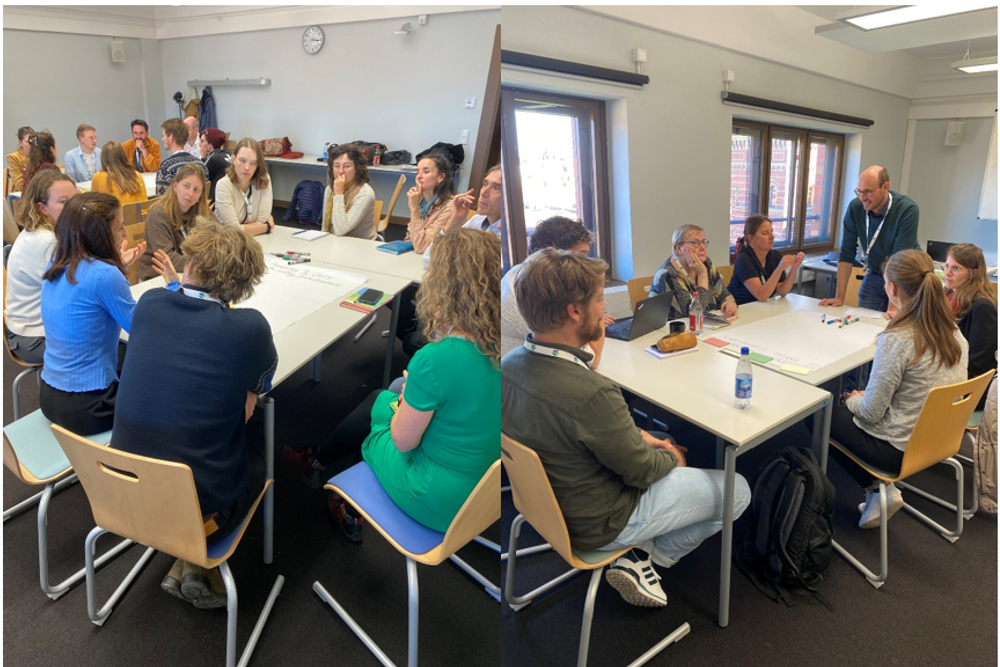
Group discussions diving deeper into the topics of paludiculture in NRPs, financing through carbon certification schemes and governance and implementation challenges. Credits: Nathale Melo Martins, Michael Succow Foundation.
Key insights from group discussions
Three breakout groups deepened the discussion:
- Peatlands and paludiculture in National Restoration Plans: Participants emphasised that NRP drafting processes thus far remain non-public. They highlighted the urgent need for awareness raising and capacity building to clarify what qualifies as peatland restoration. Rewetting — bringing back the water table to natural levels to enable the return of wetland vegetation — was underscored as essential. Without it, restoration efforts such as converting arable land to grassland offer limited ecological benefits and lead to the ultimate loss of the peat soil. Networking and knowledge exchange, and rewarding farmers for the ecological benefits of peatland restoration, were identified as key opportunities.
- Financing restoration through voluntary carbon certification schemes: This group discussed how voluntary schemes like the EU CRCF, Peatland Code (UK), and MoorFutures (Germany) deliver results-based finance to farmers and other land managers, supporting their transition toward sustainable, wise use of peatlands. They highlighted the need for aggregation mechanisms that make participation by smallholders feasible without adding bureaucracy, and for transparency when combining public subsidies with revenues from carbon credits to ensure additionality. They cautioned against a bias towards cheaper, less degraded sites that are easier to restore, stressing the need to also prioritise the most degraded peatlands through well-designed incentives. It was noted that there is growing demand for high-quality credits not only from the private sector but also from national governments, which could act as guarantors — for instance, by helping to ensure market confidence through stable demand, quality assurance, or financial backstopping.
- Governance and implementation challenges: The third group identified critical governance gaps, including limited political will, fragmented institutional structures, and weak legislative frameworks that risk undermining the NRR’s goals. Participants called for stronger cross-sectoral coordination, better data systems and databases, and clearer accountability. Agricultural policy was seen as pivotal in shifting support away from drainage-based practices toward sustainable land use such as paludiculture. The synergies with the EU LULUCF Regulation were also highlighted, as its binding net carbon removal targets and reporting rules can help drive greater ambition for peatland restoration. Participants further emphasised the importance of developing a common language across sectors, recognising the central role of water. Water resilience should be acknowledged as a powerful incentive for effective peatland rewetting and restoration, linking environmental, agricultural, and climate objectives through coherent policies and coordinated action at the landscape level.
Looking ahead
The workshop facilitated the exchange of knowledge on the evolving policy landscape and generated valuable reflections to inform the final WaterLANDS governance deliverables on best practices and advocacy for wetland restoration. By connecting technical, policy, and practical perspectives across Europe, the session demonstrated growing collaboration and reinforced WaterLANDS’ work on governance and enabling conditions for large-scale wetland restoration.
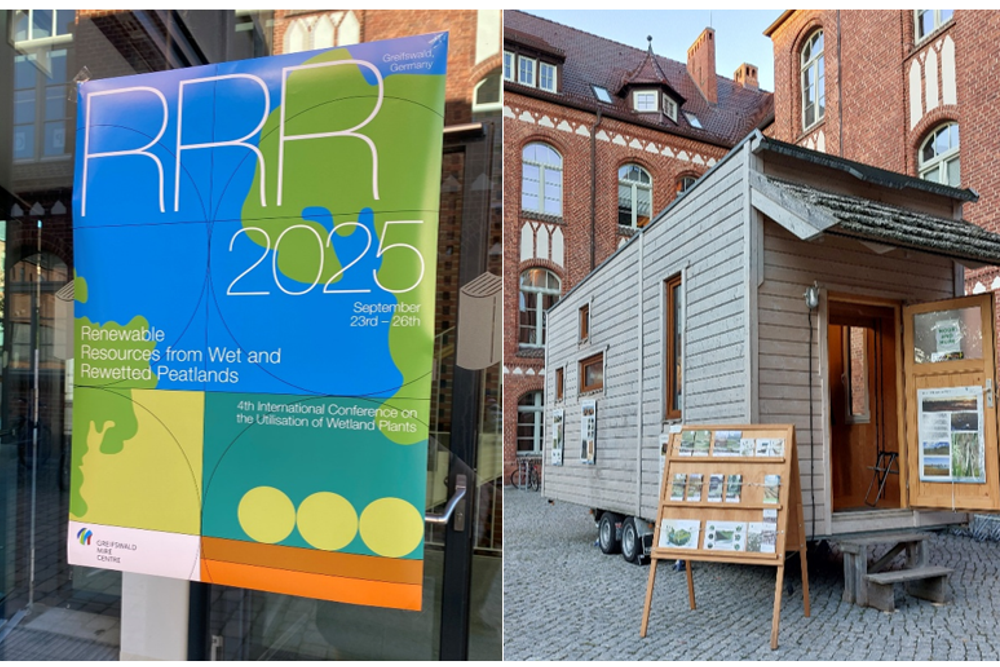
RRR2025 conference in Greifswald, Germany and the Paludi-Tinyhouse made from paludiculture materials: cattail for insulation, reed and wet grass panels for interior finishing, and alder wood for the supporting structure. Credits: Nathale Melo Martins, Michael Succow Foundation.
Article written by Elisabet Rams Beltrán, Michael Succow Foundation.
